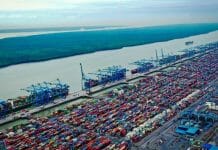The fast-moving events of the Russia-Ukraine conflict are splitting Asia according to the energy haves and have-nots, havens and non-havens. The most obvious effect lies in surging oil prices. This divides those nations that export oil and coal, and those that rely heavily on energy imports. S&P Global Ratings also believes that heightened market risk could pull capital out of Asia’s emerging markets, hitting currencies, and raising funding costs. The bigger economies are drawing investors seeking safety, as reflected in the stability of the yen and renminbi compared with the euro.
This is according to a report published earlier titled, “Ukraine Conflict Divides Asia’s Energy Haves And Have-Nots.”
“For the many economies in Asia-Pacific higher energy prices can trigger a terms-of-trade shock. This would hit current account balances and real domestic consumption and investment,” said S&P Global Ratings’ head of credit research, Asia-Pacific, Eunice Tan.
The biggest net importers relative to GDP are India, the Philippines, Korea, Taiwan, and Thailand. On this front, higher energy prices would be a plus for Asia-Pacific’s net energy exporters: Indonesia, Malaysia, and, especially, Australia.
“For rated companies in Asia-Pacific, rising commodity and energy prices and investor sentiment matter more than direct exposure to the countries in conflict. The hit of rising prices depends on the cost pass-through ability of an industry or issuer,” said S&P Global Ratings credit analyst Xavier Jean.
Asia-Pacific banks and financial institutions’ direct exposure to Russian counterparties appears small and manageable. Meanwhile, insurers’ earnings could fluctuate because of market volatility. For sovereigns, while the conflict brings risks to inflation and growth, the recovery from the pandemic should continue despite these headwinds.
The Russia-Ukraine armed conflict–and the sanctions and geopolitical friction it brings–poses headwinds to our current baseline forecasts for Asia-Pacific. This is underscored by recent cuts to most countries’ GDP forecasts, reflecting the conflict.
Substantially higher energy prices and volatility will likely strain the currencies and asset markets of many Asia-Pacific countries. This pressure will be strongest where higher energy prices pressure inflation targets–such as India, the Philippines, Korea, and Thailand. Or it could cause sizable current account deficits–in India, the Philippines, and Thailand.









